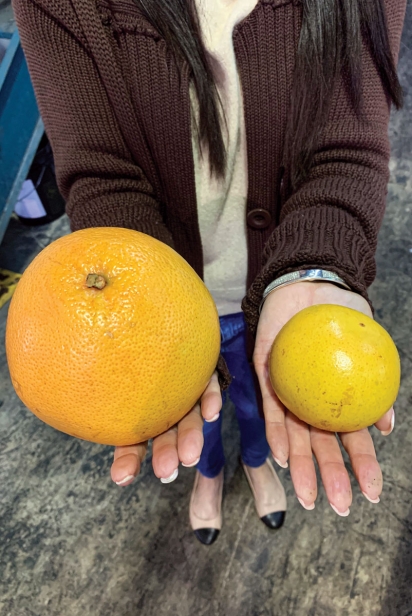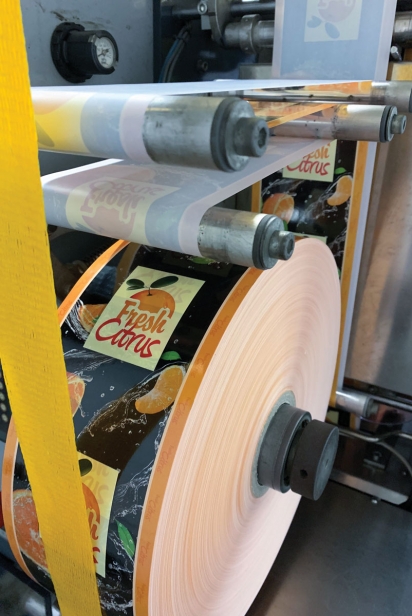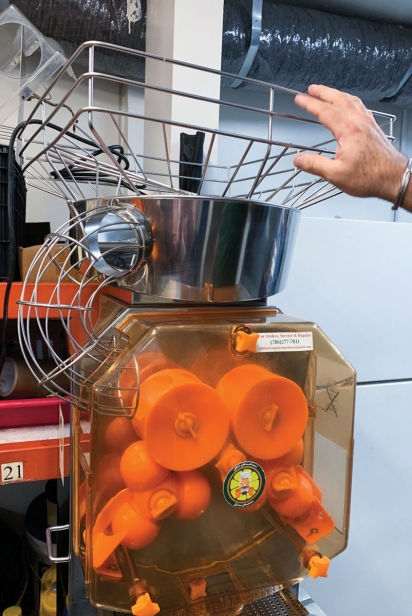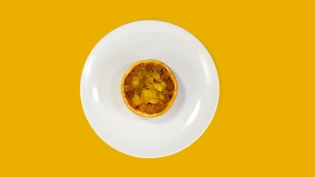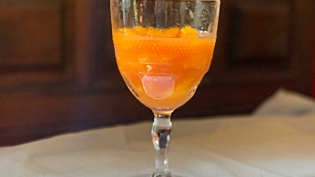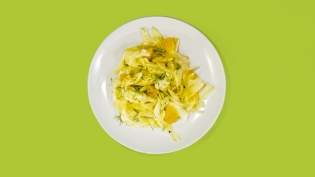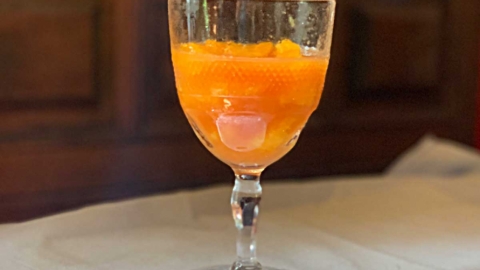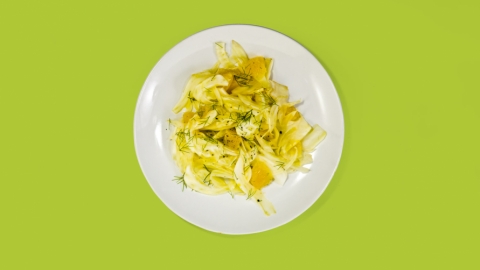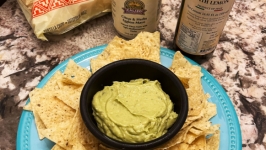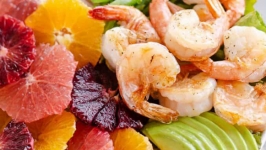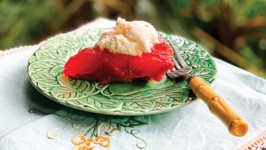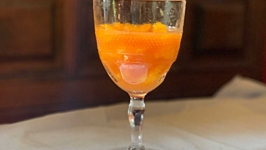All-American Citrus Packs Positivity in Every Box
Staying afloat is a challenge for those in Florida’s citrus industry, under constant threat by weather impacts, disease, land lost to developers and lower-priced imports. Miamians Juan and Judy Fiol, along with partners Gabe and Nick Bernal, use resourcefulness and a spirit of optimism to bring All-American Citrus into a new decade.
The company was started by the Fiols in 2011. Juan’s father had been in the supermarket business, but sold it and found himself bored. He decided to get into in citrus and enlisted help from Juan, who had been pursuing a career in finance and immediately saw the potential. All-American Citrus found groves in Central Florida’s Citrus Belt to provide a full range of citrus, including Valencia oranges, Ruby Red grapefruit and tangerines, targeting local supermarkets and neighborhood restaurants.
At their Medley packing house, the Fiols created custom citrus packages for business customers – schools, supermarkets, cruise ships, hotels – sorting and bagging the fruit according to customer needs. Meanwhile, Judy focused on getting the product in front of consumers at farmers markets, starting at a booth at Yellow Green Farmers Market in Hollywood. “They didn’t have anyone selling fresh juice,” she recalls, so they got a juicing machine. “It was great for us.” She worked events and farmers markets at Pinecrest Gardens, the University of Miami and Parkland to spread the word.
Selling Florida
One of their biggest jobs, Judy says, was educating consumers about Florida citrus, which is not as pretty as its California counterparts. The skin is thinner, and the color is not so intense, but the fruits are juicier and tastier. “This is how Mother Nature makes the fruits,” she says.
They also got distribution and leasing rights for juice machines, fixtures at ventanitas and Latin cafés throughout South Florida, supplying both the machines and a steady supply of fruits to their customers.
Two years ago, they brought in the Bernal brothers of Seasons Farm Fresh, who source tropical fruits both locally and internationally, to ensure a steady supply of fruits year-round. Florida citrus may taste better and leave a smaller carbon footprint, but it’s not available in the summer. “We use American products first,” says Juan. “But we also have fruit from California, Mexico and Chile, because without them, we would have to shut down. We don’t want to do that.” Still, both want to see more Florida produce in supermarkets and suggest customers tell managers they want local products.
Branching Out
To expand their reach, All-American Citrus has developed two related product lines: 305 Squeezed, bottled juices with a 60-day shelf life that preserves its nutritional value and its flavor. Judy, who is diabetic and can’t have pasteurized juice, loves this line of juices, including orange, grapefruit, tangerine, beet and orange, and turmeric, all made in a Miami juice plant.
Another promising new offering is their Fresh line of CBD-infused products, made in partnership with Physicians Preferred, that many find useful in treating inflammation, anxiety and other ailments. It’s a hot trend that Anita Bryant likely didn’t envision when she sang, “Come to the Florida sunshine tree.”
Ups and Downs of Florida Citrus
Native to Asia and Australia, these colorful members of the Rutaceae family – oranges, grapefruits, kumquat, lemon, lime, tangerines – found their way to Europe around 310 B.C., and to Florida via the Spanish conquistadores, who are believed to have planted orange trees around St. Augustine in the 1500s. By the 19th century, enough citrus was growing in Florida to make it a profitable business. North of Titusville, Captain Douglas Dummitt planted a citrus grove in what’s known today as the Indian River Citrus District, where fruits were easily transported by boat to northeastern markets. After the Civil War, Florida’s annual commercial citrus production had grown to one million boxes; by 1893, it rose to more than five million boxes. Then came the Great Freeze of 1894-95, wiping out many groves and forcing growers to move farther south.
In 1912, citrus canker, a bacterial disease that left the fruit scarred, was discovered. As soon as it was eradicated, another pest, Mediterranean fruit fly, emerged. By 1971, production topped 200 million boxes, but a series of freezes in the 1980s devastated many groves. In 1998, a tiny insect known to be a vector for the bacterium that causes the deadly citrus greening disease HLB, was discovered in Miami-Dade County. Five years later, the first case of greening was reported, and quickly spread to every citrus-producing county in the state. While researchers work to combat the effects of this disease, growers persevere. Today, the USDA’s initial estimate of the 2019-2020 Florida orange crop is 74 million boxes, up 3.4 percent from last year’s final tally. That’s seen as good news for the industry dealing with HLB and recovering from Hurricane Irma.
In a Packing House
How does ripe fruit get from the groves to your supermarket? The hub is the packing house. After the pickers fill their field boxes, they go into bins at the packing house, where fruit is graded for size and appearance. The fruits are washed and sprayed with a light coating of natural wax to help it stay fresh. If fruits are still green, they may be treated with ethylene gas so they turn orange. Then the packing house sorts the fruits by size and quality for delivery. All-American Citrus prefers to handle this process themselves – “we get the good, the bad, the ugly.” The fruit – which may have been picked that morning – arrives at their Medley packing house in huge bins. These grapefruit are dumped into a large sorting area,where some are packed by hand in boxes to be delivered to cruise lines and schools. Other fruits go on a conveyor belt where they’re sorted by size, which varies widely.
Up until last year, workers at All-American Citrus manually bagged citrus. But now they use a high-speed bagging machine that’s programmed to sort fruit by weight [4]; bag, seal and label it [5]; then send the bags along for packing in boxes to ship to customers. The machine tailors the product for each customer. Fruits that don’t meet quality standards go to Farm Share, which distributes them to those in need.
ALL-AMERICAN CITRUS
305 Squeezed, Fresh 100% Juice with CBD
allamericancitrus.com
Find 305 Squeezed at the Coral Gables Farmers Market and the Parkland Farmers Market (every other Sunday, Jan. 19-Apr. 19). Look for their juices at Winn-Dixie Key Biscayne, XO Espresso Bar at Lincoln Eatery and on Brickell.


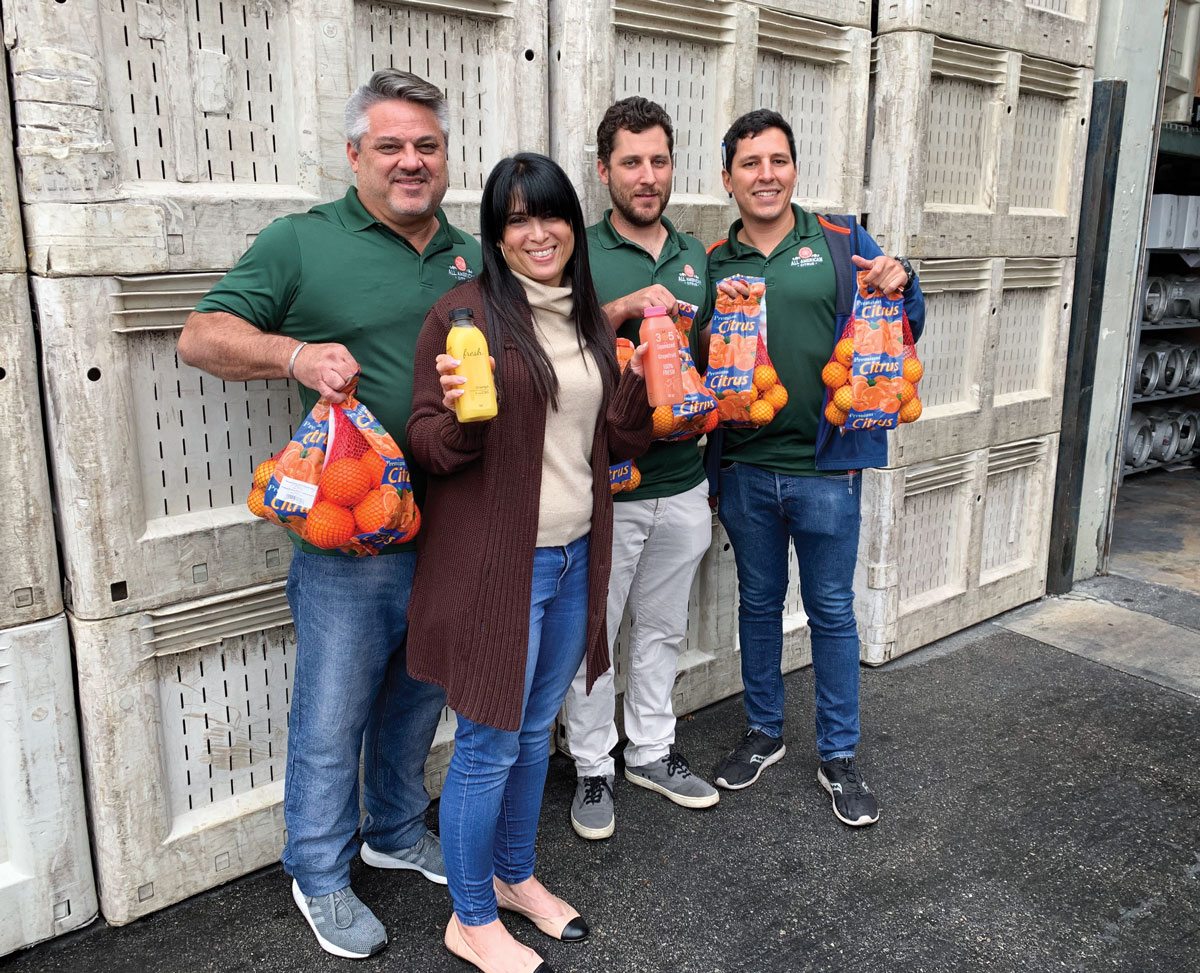
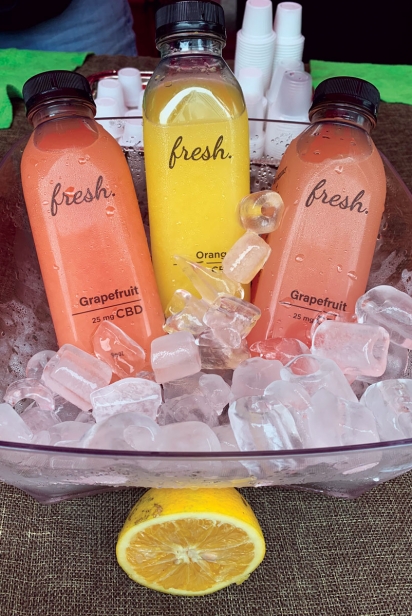
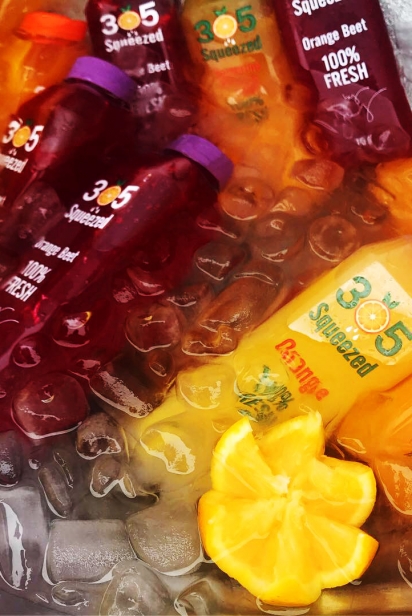
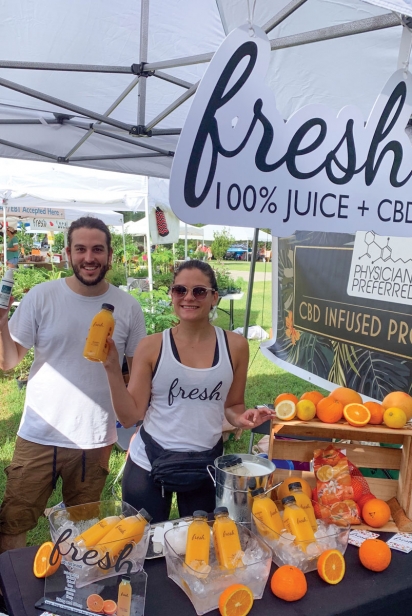
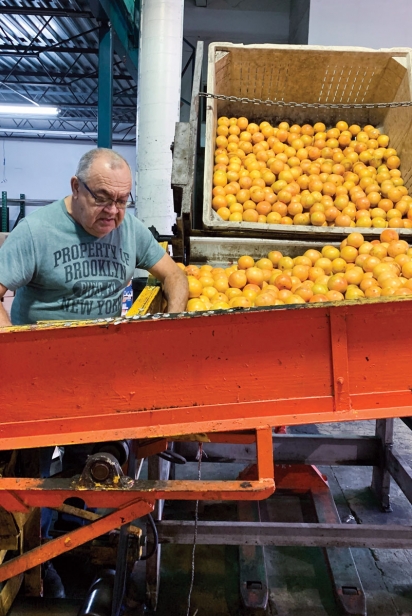
![Other fruits go on a conveyor belt where they’re sorted by size [2], which varies widely](https://ediblesouthflorida.ediblecommunities.com/sites/default/files/styles/ariticle_portrait__322x483_/public/images/article/article_details/all-american-citrus-sorting.jpg?itok=4W54hGmS)
